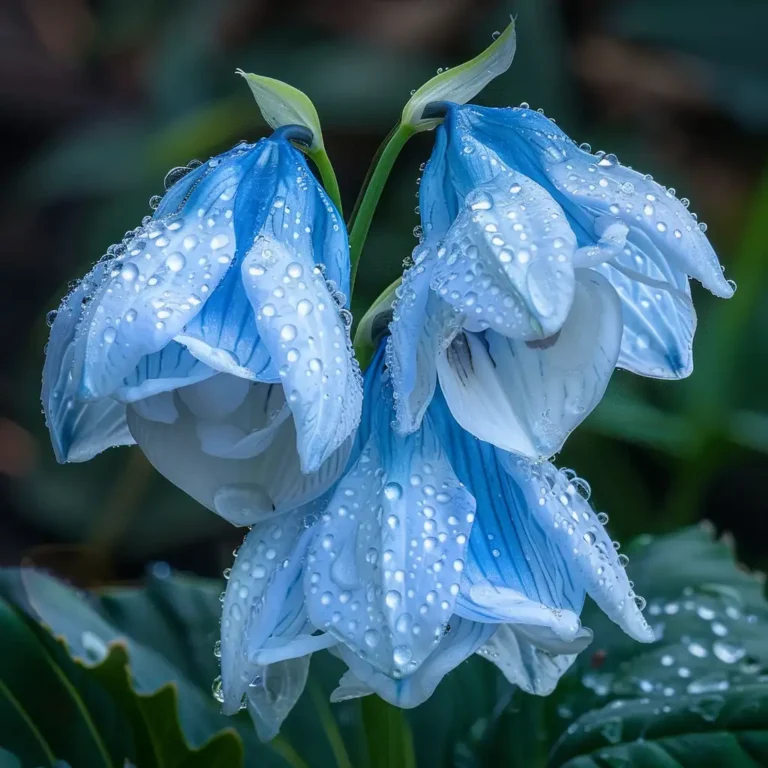Introduction
The Sky Tears Iris (Iris reticulata) is a delightful addition to any garden. This beautiful flower is renowned for its vibrant colors and intricate patterns, making it a favorite among gardeners and landscape designers. Whether you are a seasoned gardener or a beginner, growing Sky Tears Iris can be a rewarding experience due to its low maintenance and stunning visual appeal.
Description of Sky Tears Iris
The Sky Tears Iris boasts striking, jewel-like flowers that bloom early in the spring. These flowers typically feature a rich palette of blues, purples, and occasionally, whites and yellows. Each flower has delicate, reticulated patterns on the petals, which add to its unique charm. The plant itself grows to a height of about 15 cm (6 inches), making it a perfect choice for borders, rock gardens, and containers.
Native Habitat and Distribution
Originally native to the regions of Turkey, Iran, and the Caucasus, the Iris reticulata thrives in mountainous terrains and rocky outcrops. It prefers well-drained soil and a sunny to partially shaded location. This hardy plant is well-adapted to cold climates, which makes it an excellent choice for gardens in temperate regions.
Varieties of Iris reticulata
There are several popular varieties of Iris reticulata, each offering unique features:
- ‘Harmony’: Known for its deep blue flowers and yellow central stripe.
- ‘Joyce’: Features light blue petals with a subtle yellow marking.
- ‘Pixie’: A compact variety with vibrant violet-blue flowers.
These varieties are prized for their early spring blooms and ease of care, making them popular choices among gardeners.
Planting and Growing Conditions
To successfully grow Sky Tears Iris, consider the following guidelines:
- Soil: Prefers well-drained, sandy or loamy soil with a neutral to slightly acidic pH.
- Location: Choose a sunny spot or a partially shaded area.
- Planting Time: Plant bulbs in the fall, about 5 cm (2 inches) deep and 10 cm (4 inches) apart.
- Watering: Water sparingly; overwatering can lead to bulb rot.
- Fertilization: Apply a balanced fertilizer in early spring to encourage blooming.
Propagation Methods
There are two main methods for propagating Iris reticulata:
- Seed Propagation: Collect seeds from mature plants and sow them in a well-draining seed mix. Germination can take several months.
- Bulb Division: The most common method, divide bulbs after the foliage has died back in late summer or early fall.
Ensure that the divided bulbs are planted immediately to prevent drying out.
Care and Maintenance
Maintaining Sky Tears Iris is relatively straightforward:
- Routine Care: Remove spent flowers to encourage new blooms. Trim back foliage only after it has fully yellowed.
- Pest and Disease Management: Keep an eye out for aphids and slugs. Use organic pest control methods if necessary.
- Seasonal Maintenance: Mulch around the plants in winter to protect the bulbs from extreme cold.
Landscaping Uses and Design Ideas
Iris reticulata can be creatively integrated into various garden designs:
- Borders: Plant along garden edges for a splash of early spring color.
- Rock Gardens: Ideal for rocky or alpine gardens due to their compact size.
- Containers: Perfect for patio pots and window boxes.
Benefits of Growing Iris reticulata
There are numerous benefits to growing Sky Tears Iris:
- Aesthetic Appeal: Their vibrant colors and patterns enhance garden beauty.
- Ecological Benefits: They attract pollinators like bees and butterflies.
- Low Maintenance: Once established, they require minimal care.
Common Problems and Solutions
Here are some common issues and their solutions:
- Bulb Rot: Avoid overwatering and ensure proper drainage.
- Poor Blooming: Ensure the plants receive adequate sunlight and nutrients.
- Pests: Use natural pest repellents to keep pests at bay.
FAQs
What is the best time to plant Iris reticulata bulbs?
The best time to plant Iris reticulata bulbs is in the fall, about 6-8 weeks before the ground freezes.
How often should I water my Iris reticulata?
Water sparingly, especially during the dormant season. Ensure the soil is well-drained to prevent bulb rot.
Can Iris reticulata be grown indoors?
Yes, Iris reticulata can be grown indoors in pots. Ensure they have sufficient light and well-draining soil.
What pests commonly affect Iris reticulata?
Common pests include aphids, slugs, and snails. Regular monitoring and organic pest control can help manage these.
How long do Iris reticulata flowers last?
The flowers of Iris reticulata typically last for 1-2 weeks in early spring.
Conclusion
In summary, the Sky Tears Iris (Iris reticulata) is a versatile and low-maintenance plant that can add a burst of color to any garden. Its unique beauty and hardy nature make it a perfect choice for both novice and experienced gardeners. Embrace the charm of Sky Tears Iris and enjoy the vibrant blooms it brings to your outdoor space.

